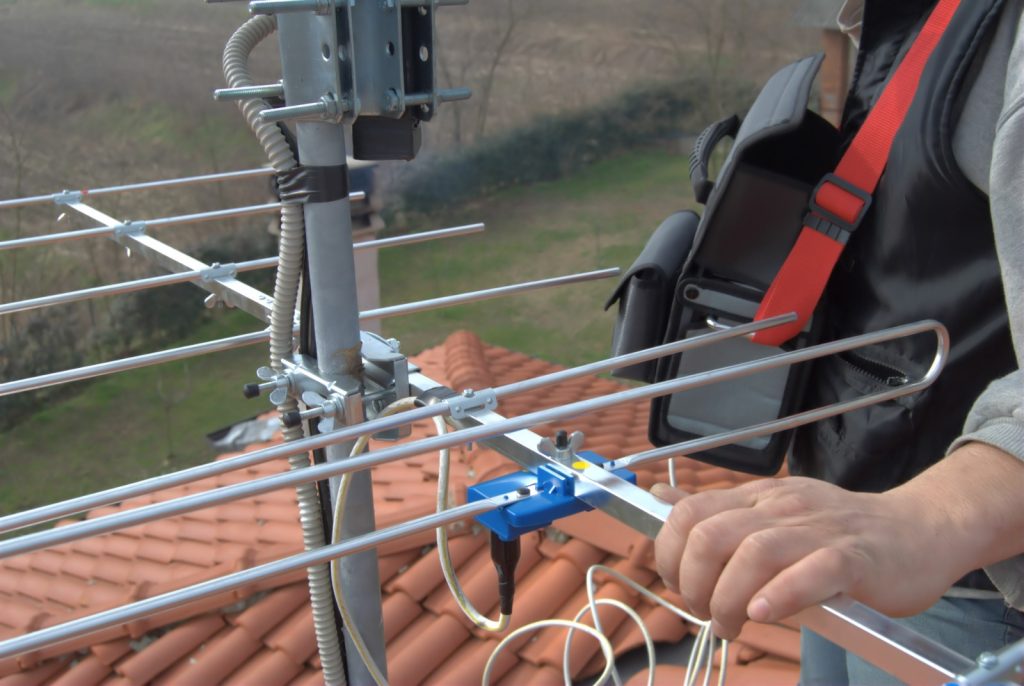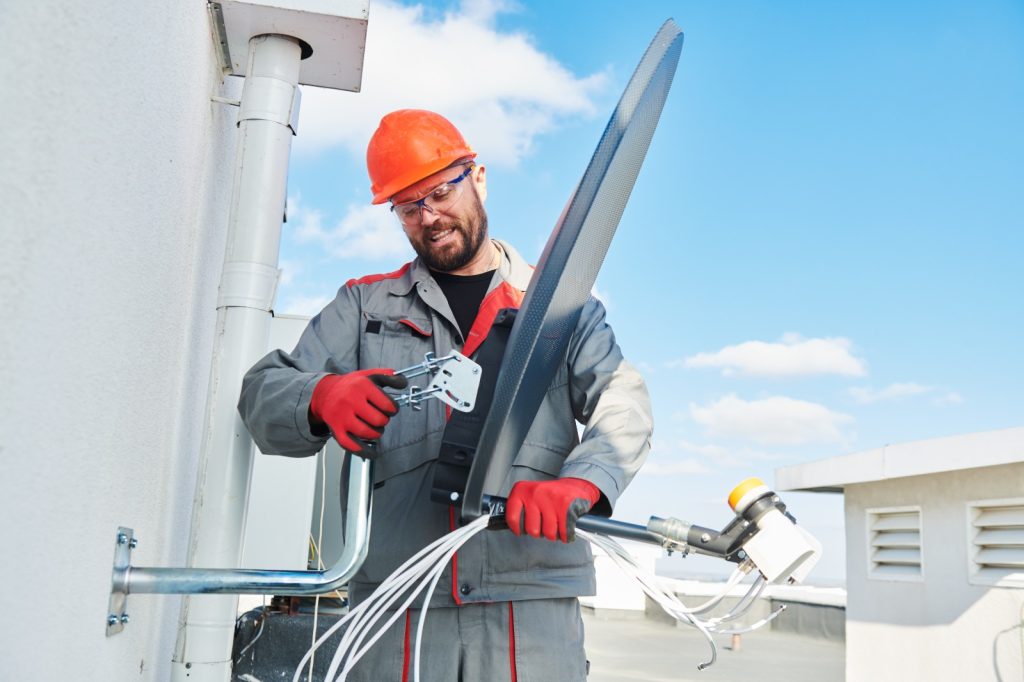Table of Content
Overview
In an era dominated by streaming, there’s still a strong case for classic TV antennas, especially with increasing interest in cost-effective alternatives to cable and satellite subscriptions. Whether it’s for live sports, news, or local channels, antennas provide a straightforward way to access free broadcasts. When choosing an antenna, the big decision is often between indoor and outdoor models. Each has distinct advantages and limitations, and which one is better depends largely on individual needs. Let’s dive into what makes each type unique and discover which could be the best fit for your viewing needs.
What is an Indoor TV Antenna?

What is an Outdoor TV Antenna?
Outdoor TV antennas are larger, more powerful devices that are mounted on rooftops, poles, or other elevated outdoor locations. Designed to capture stronger signals, outdoor antennas are capable of reaching stations up to 150 miles away, depending on their positioning and surrounding terrain. While they require a more involved installation process, these antennas can often pick up more channels and deliver higher-quality broadcasts due to fewer physical obstructions between the antenna and broadcast signals.
| Criteria | Indoor Antenna | Outdoor Antenna |
|---|---|---|
| Installation | Easy and Quick | More complex, may need pro help |
| Signal Range | Up to 50 miles | Up to 150 miles |
| Cost | Affordable | Higher upfront cost |
| Maintenance | Low | Moderate, weather-dependent |
| Best For | Urban, close to stations | Suburban, rural, or remote areas |
1. Installation Ease and Flexibility
Indoor Antenna: Indoor antennas are ideal if you’re looking for something that’s virtually plug-and-play. Place them near a window or on a wall and they’re usually ready to go within minutes. Indoor antennas don’t require drilling or permanent fixtures, making them perfect for renters.
Outdoor Antenna: Outdoor antennas require careful placement and secure mounting. They’re generally installed on rooftops or elevated poles, which may require professional assistance. Although the installation may be more complex, the payoff is often better signal quality and increased access to channels.
2. Signal Strength and Reception Quality
Indoor Antenna: Indoor antennas may struggle with signal quality due to physical obstructions like walls, appliances, and electrical interference. These factors can limit both signal strength and clarity, especially if you’re located further from a broadcast tower.
Outdoor Antenna: Outdoor antennas tend to deliver stronger signal quality with fewer interruptions, thanks to their ability to bypass indoor obstacles. Positioned higher, they’re more likely to catch signals without interference, resulting in clearer images and sound.
3. Signal Interference: Indoor vs. Outdoor
Signal interference can drastically impact TV reception, especially in urban areas where electronic devices, appliances, and even building materials can cause disruptions.
- Indoor Antenna: Prone to interference from walls, furniture, and electronic devices, which can lead to inconsistent signals.
- Outdoor Antenna: While they avoid indoor obstructions, outdoor antennas can be affected by severe weather conditions like rain, snow, or high winds. However, most are built to withstand weather extremes and maintain solid reception quality.
4. Coverage and Range: Reaching More Channels
If you’re after a wide variety of channels, an antenna’s range can be crucial.
- Indoor Antenna: Indoor antennas generally max out at around 50 miles in range, making them effective in urban areas where broadcast towers are close.
- Outdoor Antenna: Outdoor antennas can reach signals up to 150 miles away, depending on elevation and landscape. This range is particularly useful for rural areas where broadcast towers may be far apart.
5. Durability and Maintenance
Indoor: Indoor antennas are largely maintenance-free as they’re safe from weather exposure. The only upkeep may be occasional dusting.
Outdoor: Outdoor antennas are generally built with weather-resistant materials, but they do require periodic maintenance. Factors like snow buildup, rain, and wind can sometimes lead to minor upkeep needs.
6. Cost Comparison
While price varies based on model and brand, indoor antennas are usually more budget-friendly, costing between $10 to $50 on average.
- Indoor Antenna: Affordable, with no installation fees. Ideal for those on a budget or uncertain about switching to an antenna.
- Outdoor Antenna: Typically costs more, with an average price range of $50 to $150, plus potential installation costs if professional help is needed.
7. Signal Booster Needs: When Do They Help?
A signal booster can amplify weak signals and reduce interference, often proving essential for those far from broadcast towers.
- Indoor: Signal boosters are common with indoor antennas to improve range and clarity, especially if walls or furniture cause interference.
- Outdoor: Less likely to need a booster given the higher-quality signal from outdoor placement, although some still benefit from amplification in particularly remote areas.
8. Antenna Aesthetics and Space Constraints
Indoor Antenna: Compact and often designed to blend with home decor. Many are sleek, flat, and can even be hidden behind picture frames or curtains.
Outdoor Antenna: Visible from the outside, outdoor antennas can be larger and may affect the aesthetic of a building’s exterior.
9. Longevity and Weather Resistance
While indoor antennas last for years with minimal maintenance, outdoor antennas are constructed to endure harsh weather.
- Indoor Antenna: Protected from the elements and generally lasts as long as it’s taken care of.
- Outdoor Antenna: Weather-resistant materials ensure longevity, but periodic inspections are advised.
10. Accessibility and Portability
Indoor antennas are a favorite for apartment dwellers or those with limited outdoor space, providing flexibility without permanent installation.
- Indoor Antenna: Portable, can be repositioned easily, making it ideal for renters or anyone who may relocate.
- Outdoor Antenna: More fixed in nature, these antennas suit homeowners looking for stable, long-term setups.
| Antenna Type | Pros | Cons |
|---|---|---|
| Indoor TV Antenna | Easy installation Budget-friendly Perfect for urban areas |
Limited range Prone to interference |
| Outdoor TV Antenna | High-range and channel access
Clearer signal Fewer physical obstructions |
Higher upfront cost More complex installation |
Best Use Cases for Indoor TV Antennas


Best Use Cases for Outdoor TV Antennas
Outdoor antennas excel in suburban and rural areas, where distances from broadcast towers are greater. They’re the best choice for households looking for a stable, high-quality signal with extensive channel options.
Which Should You Choose? Factors to Decide
Both indoor and outdoor antennas offer valuable benefits, making either choice worthwhile depending on your situation. Indoor antennas deliver convenience and affordability, while outdoor models offer range and quality. By assessing your location, budget, and viewing needs, you can find the perfect antenna solution to cut the cable cord without sacrificing quality.
Looking for crystal-clear TV reception in Melbourne?
DJTV Services specializes in professional TV antenna installation services in Melbourne, ensuring you get the best signal quality and access to all your favourite channels. With years of experience and a commitment to precision, DJTV Services offers tailored solutions for both indoor and outdoor antennas, expertly installed to suit Melbourne’s unique broadcasting landscape. Whether you’re in a bustling urban area or a quieter suburb, DJTV Services is here to make sure your viewing experience is seamless and hassle-free.
Frequently Asked Questions
No, indoor antennas pick up broadcast signals directly and do not need Wi-Fi.
Most indoor antennas can reach up to 50 miles, though this depends on factors like surrounding buildings and walls.
Yes, outdoor antennas are ideal for rural locations, as they offer extended range and can capture distant broadcasts.
Yes, some users combine both to maximize signal strength and access to channels.
Streaming services do not require an antenna; they need an internet connection and a compatible device.
